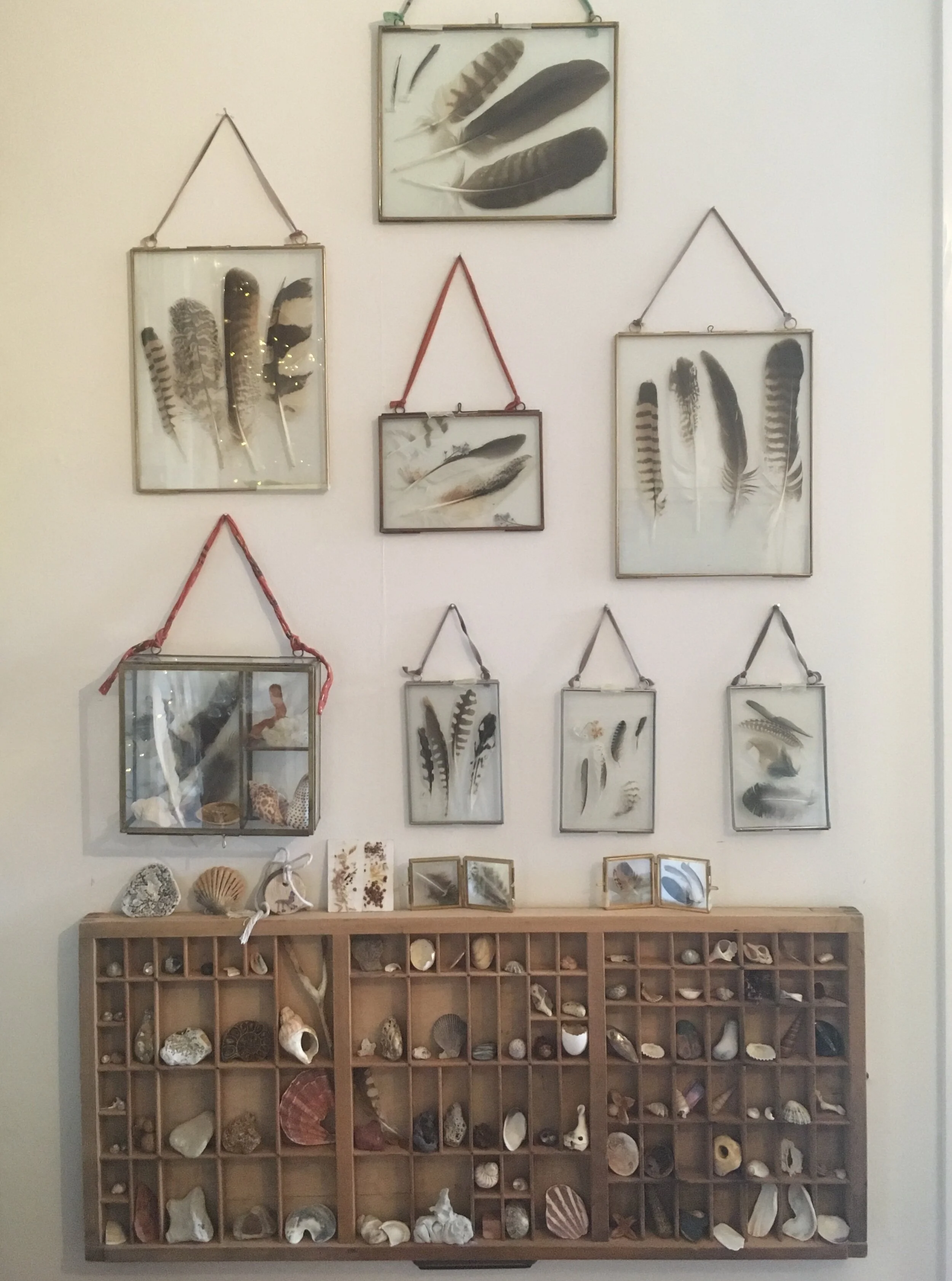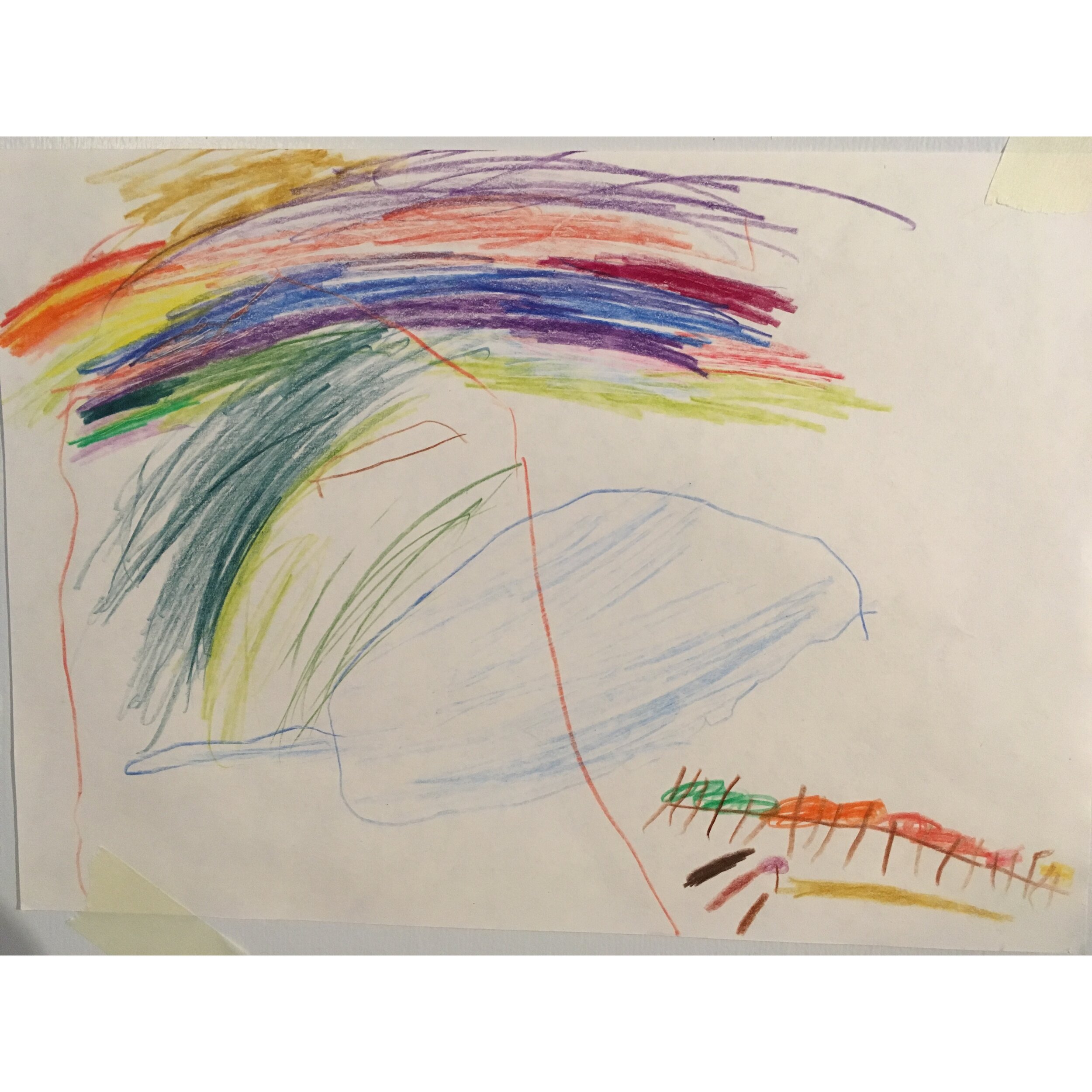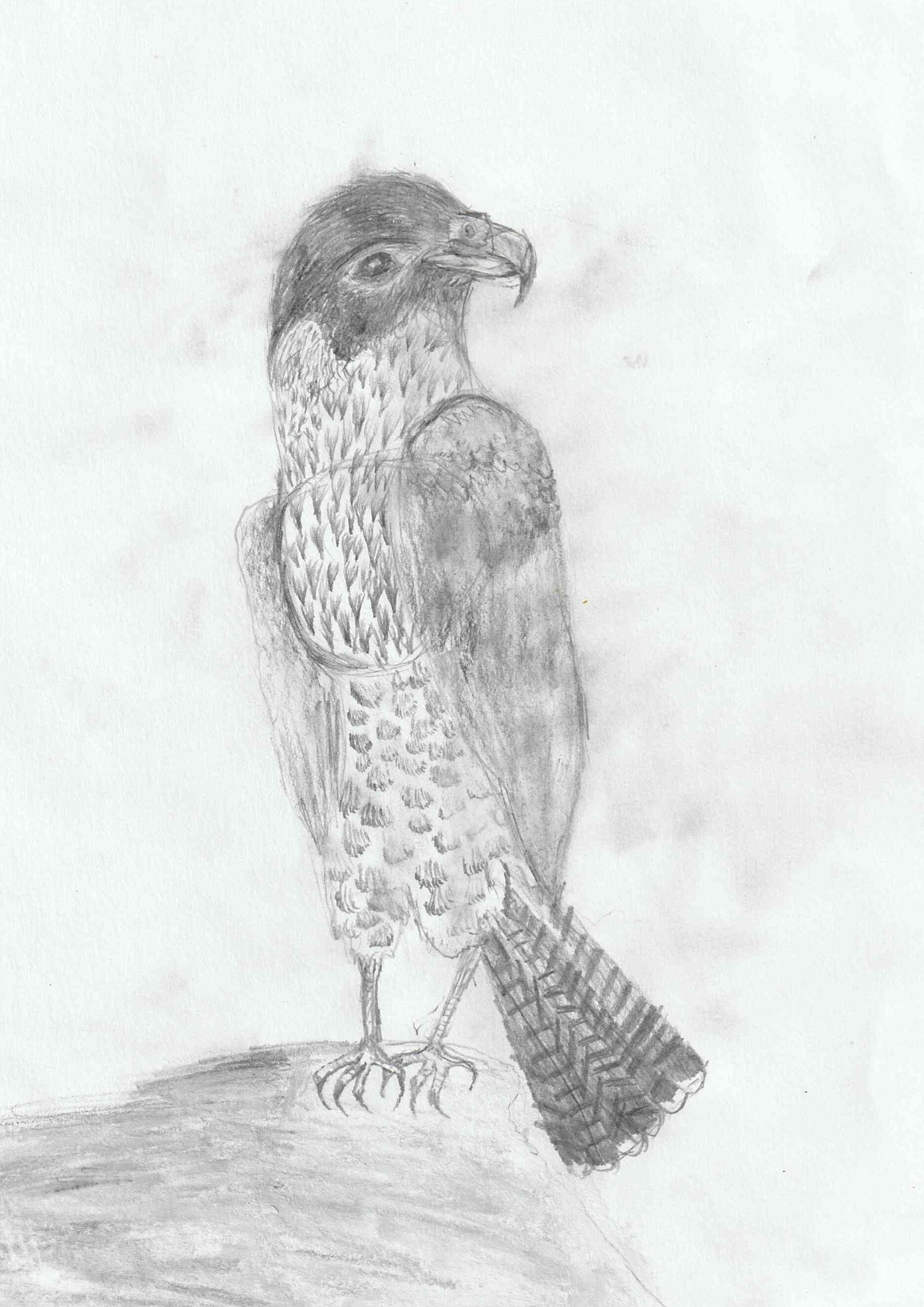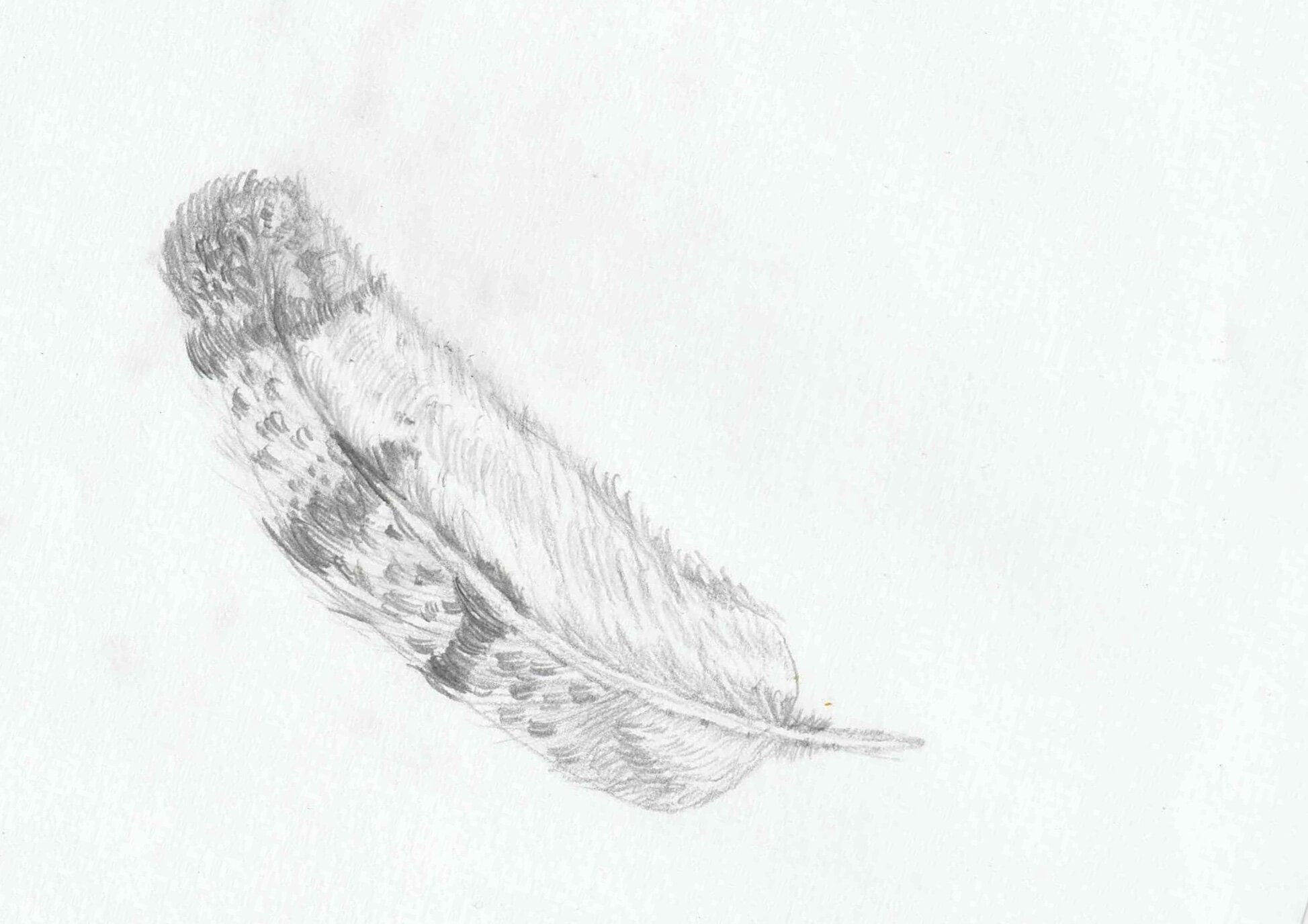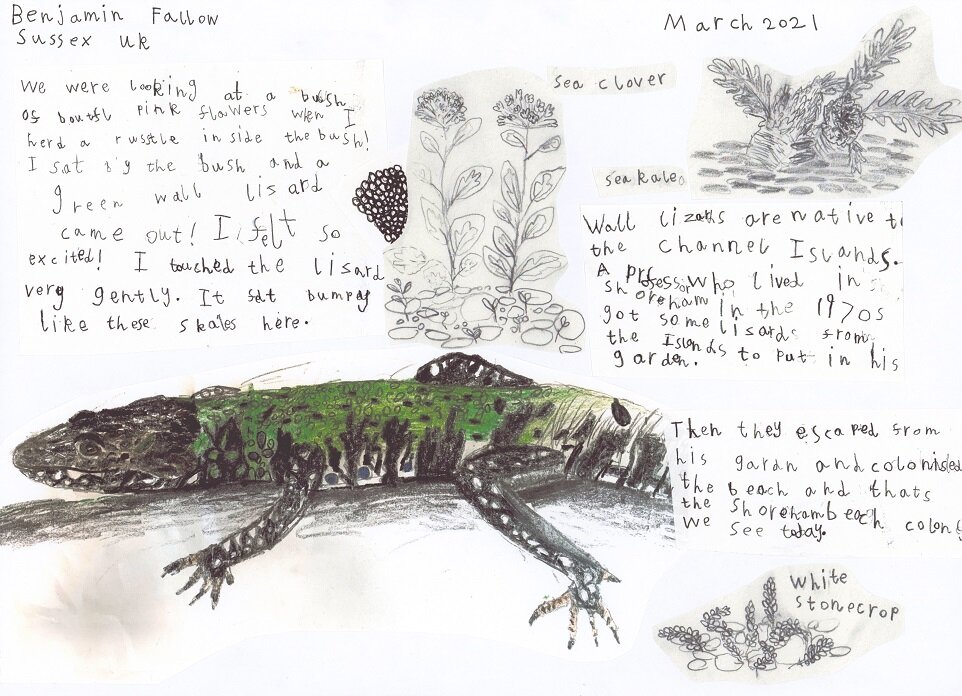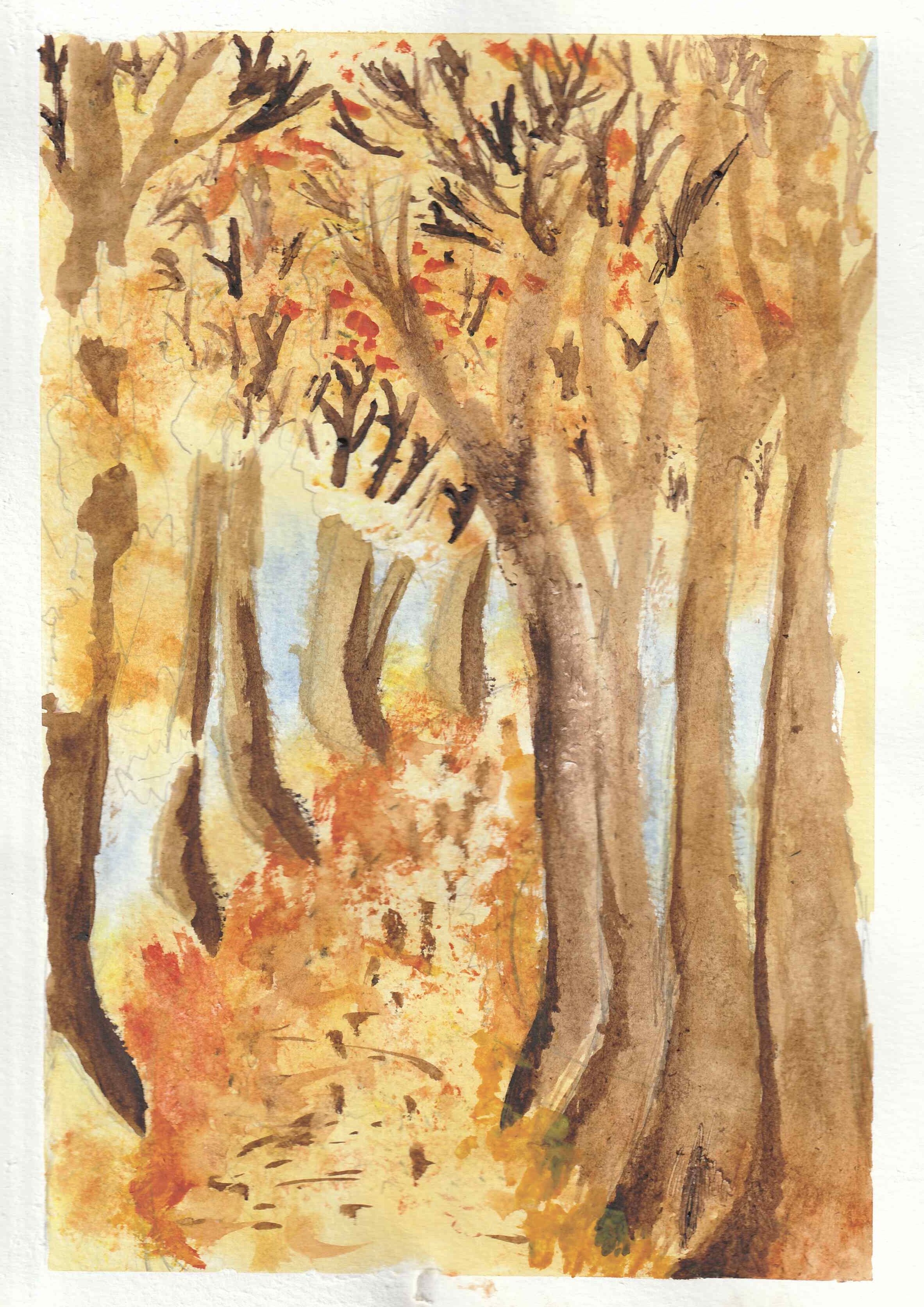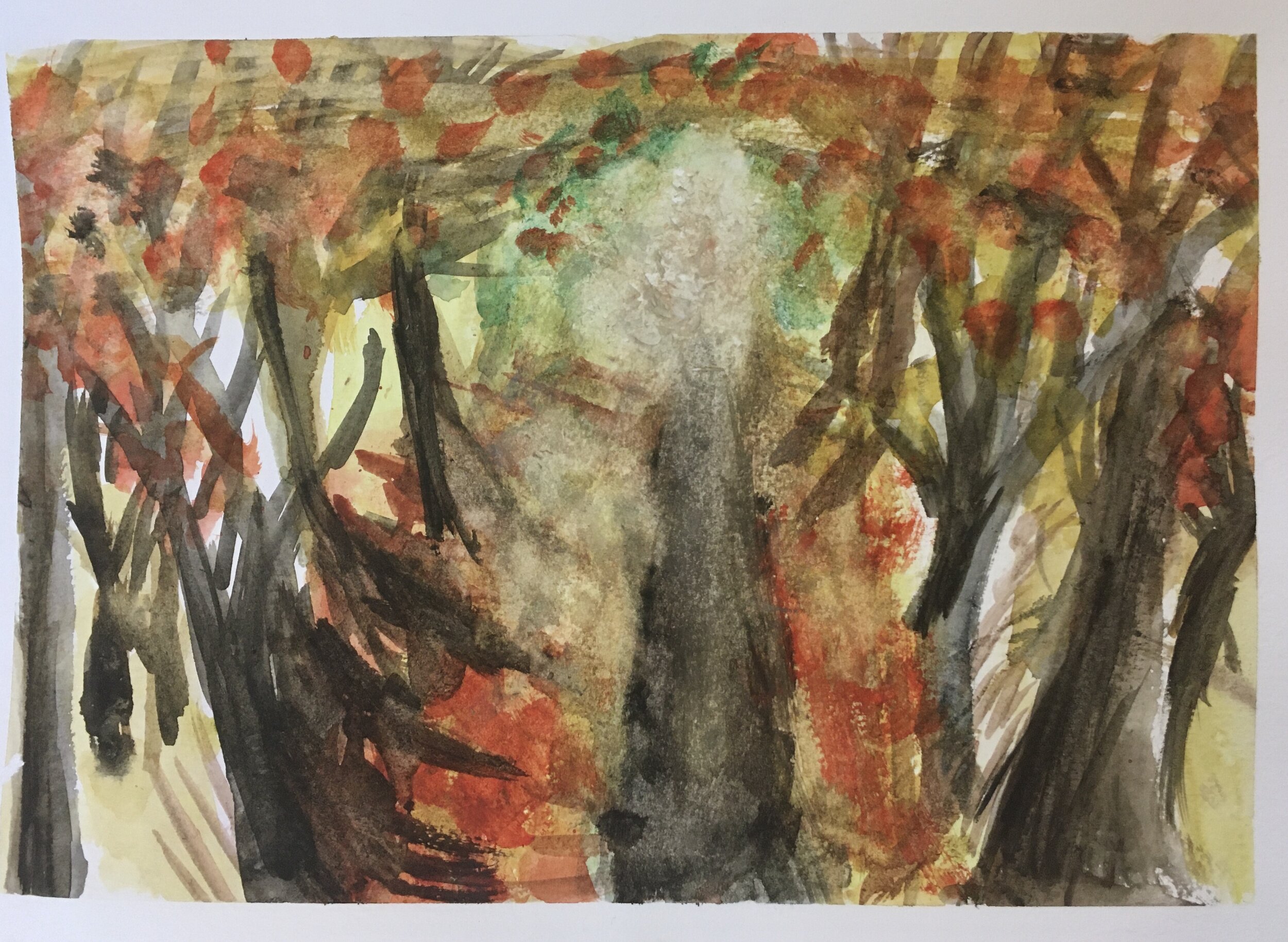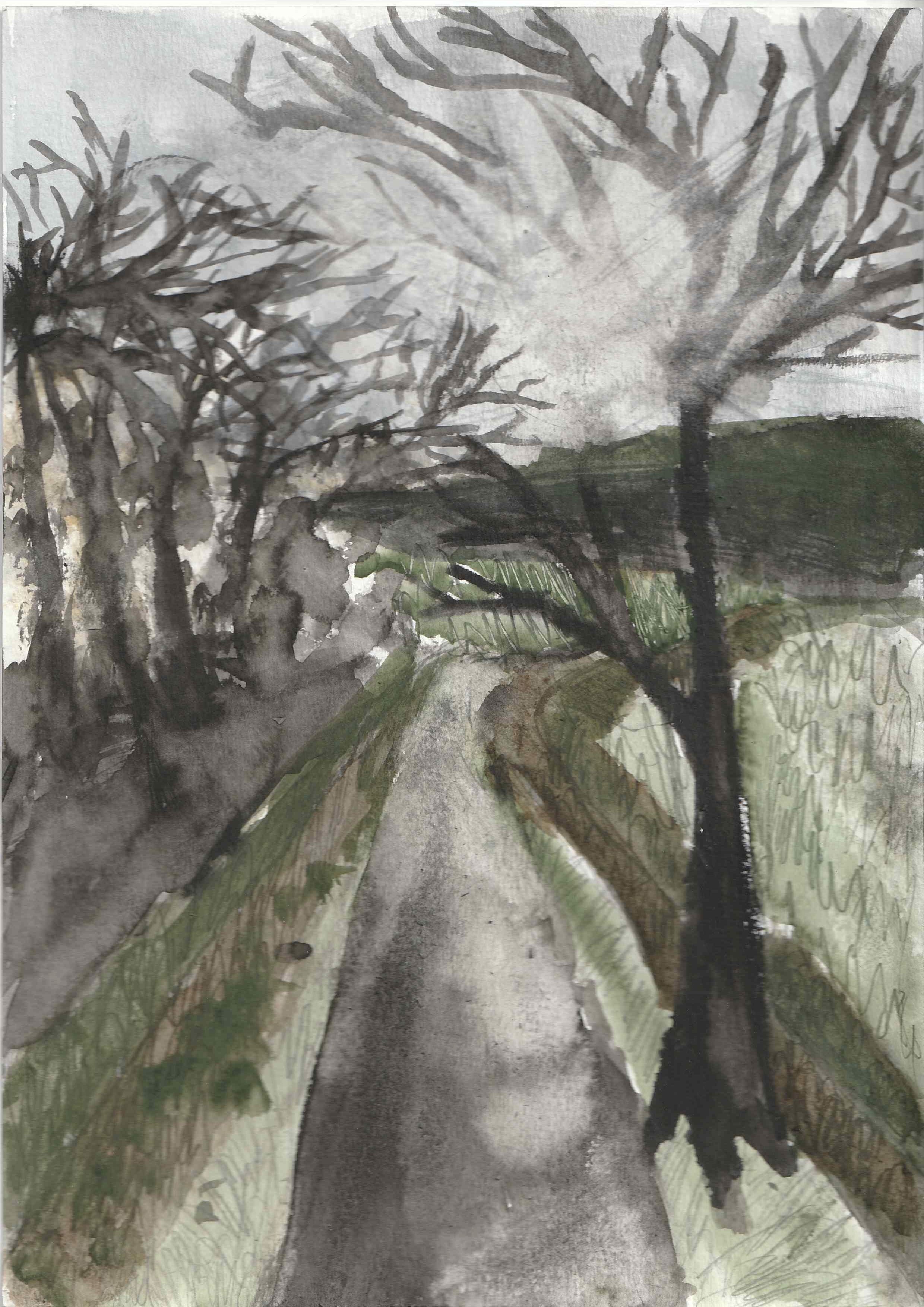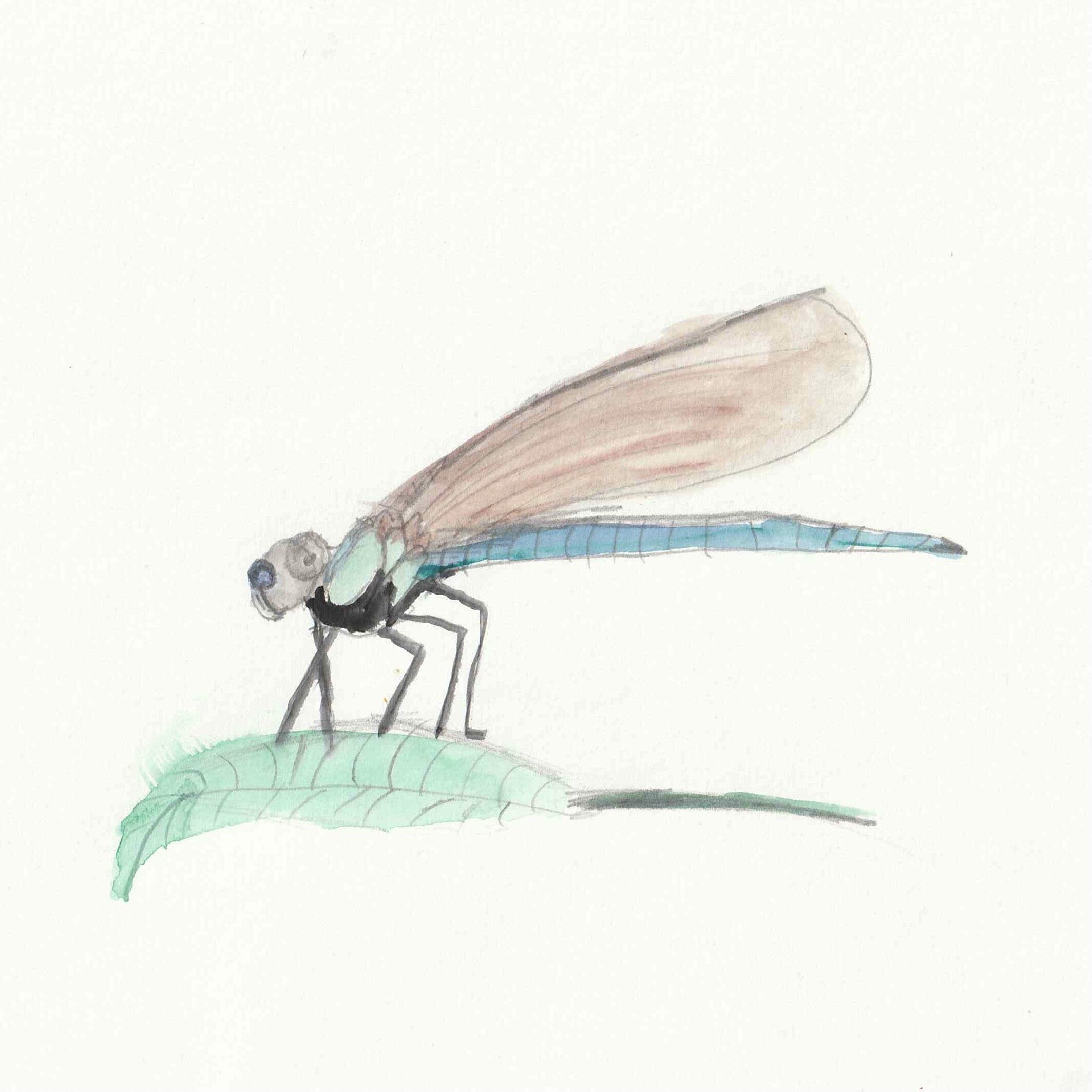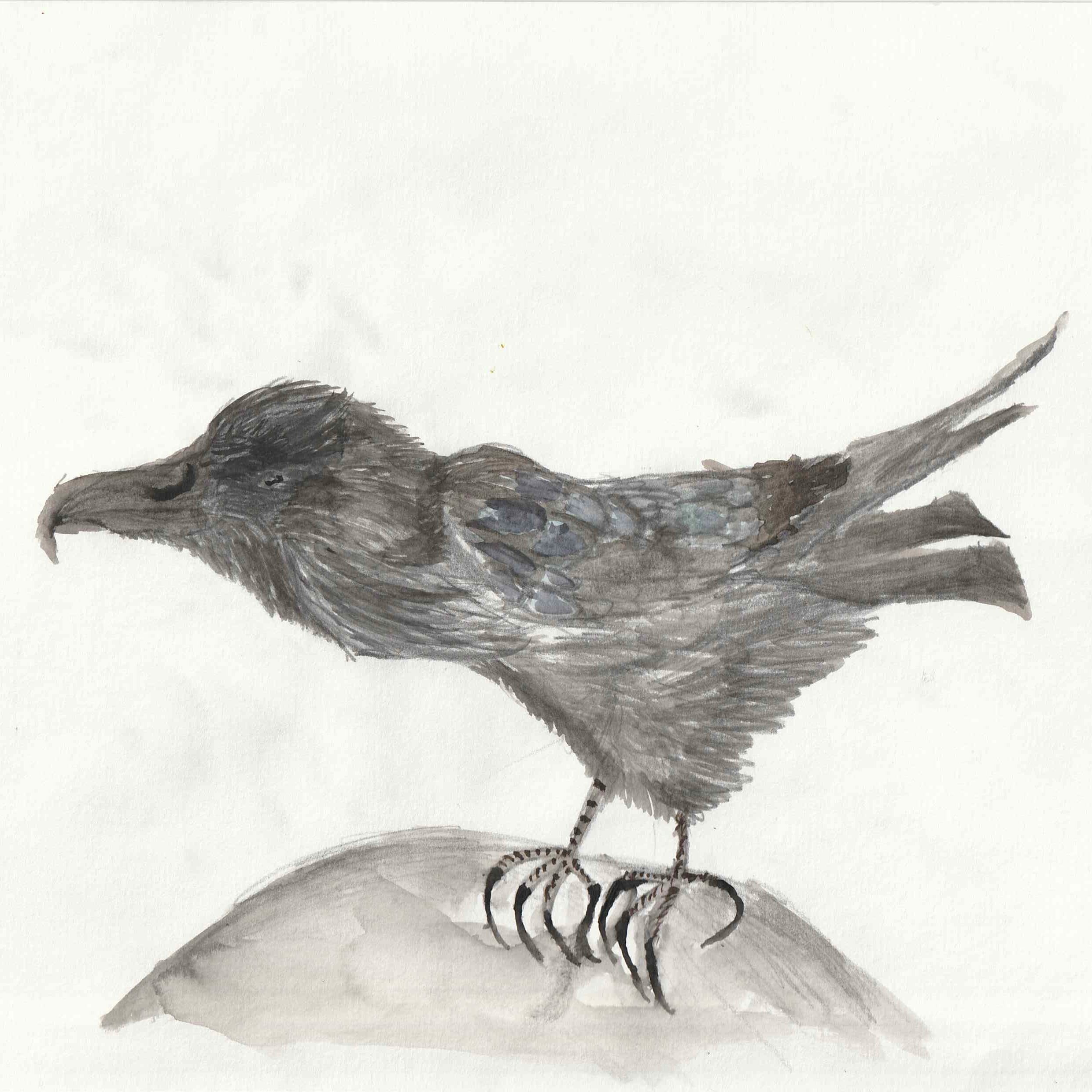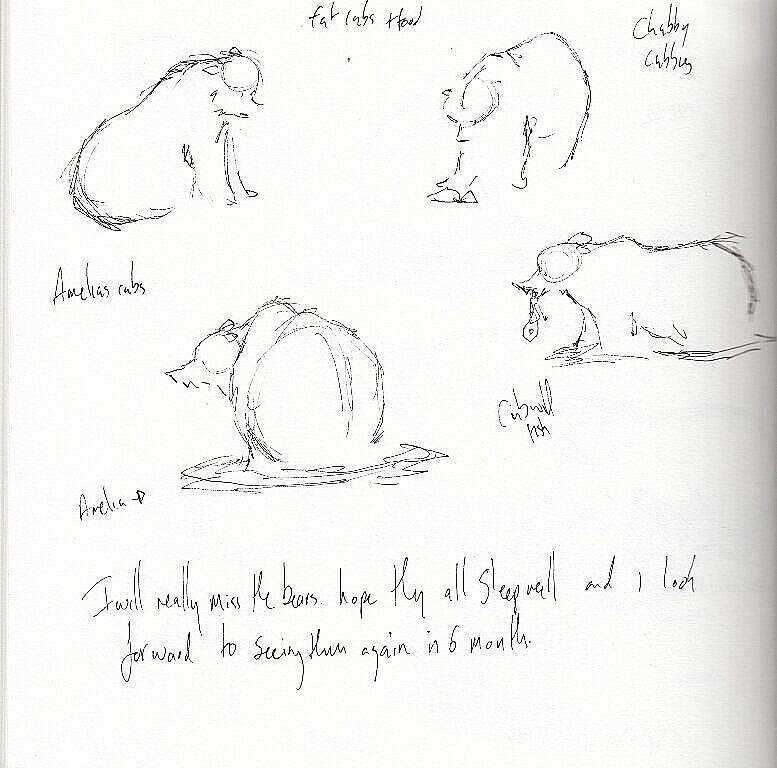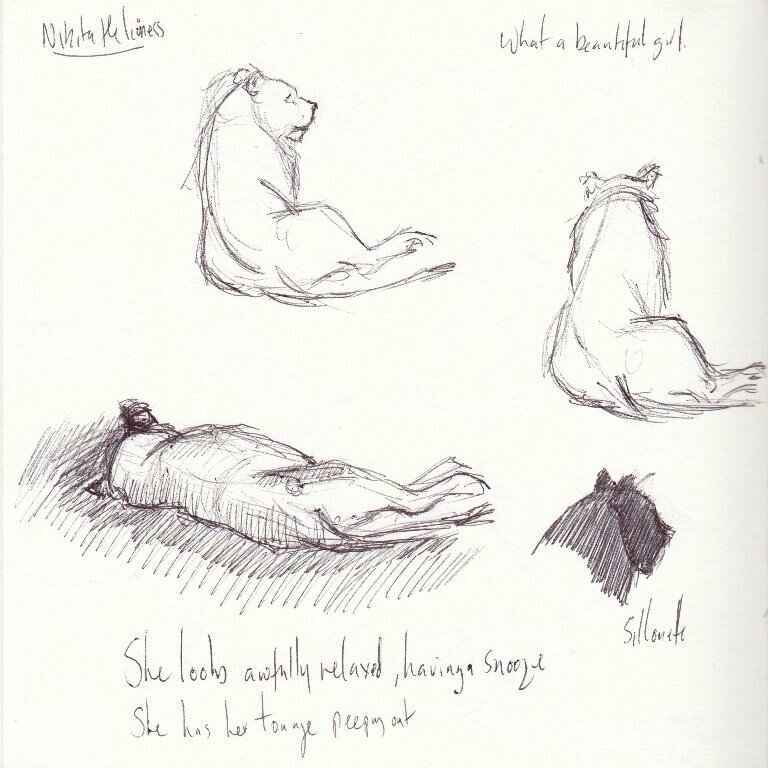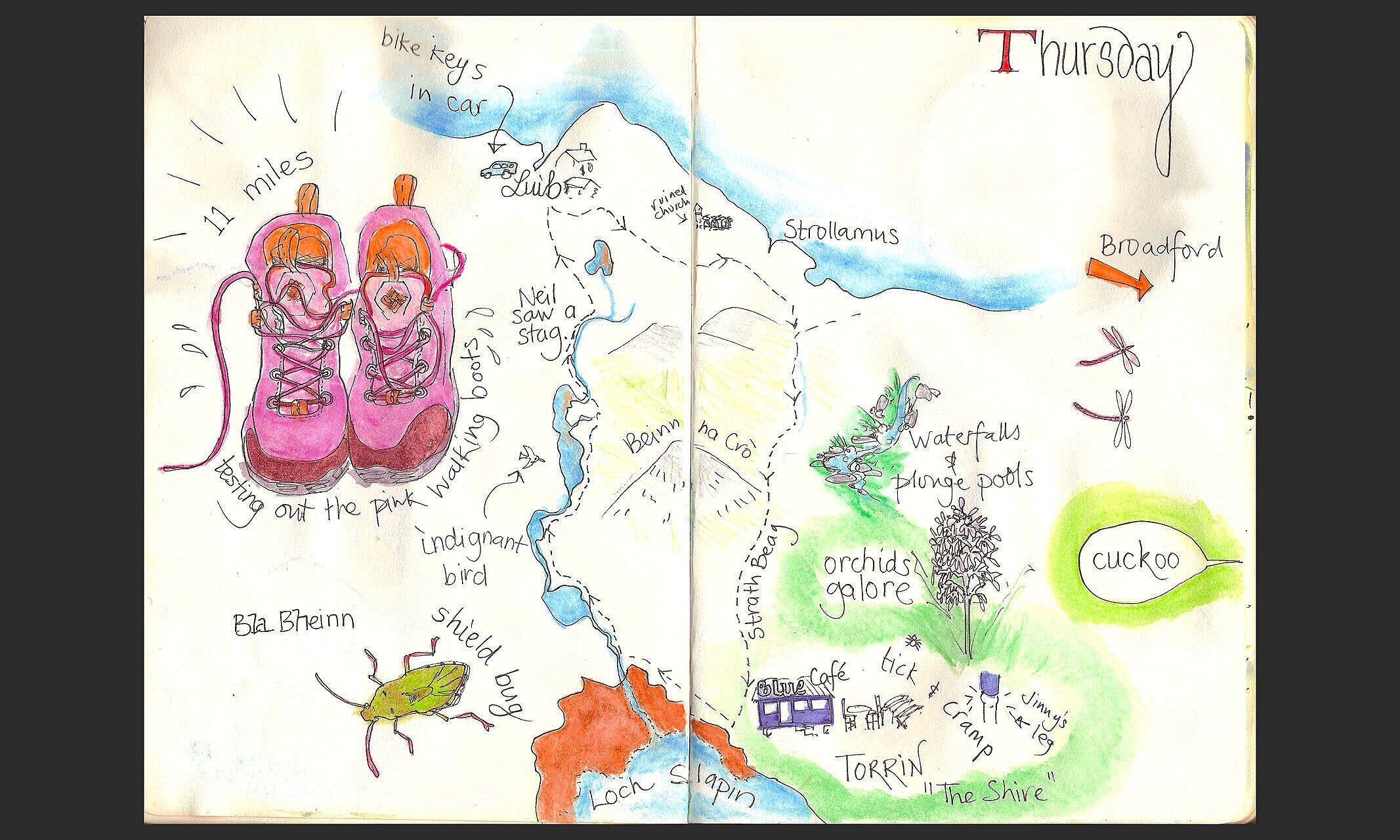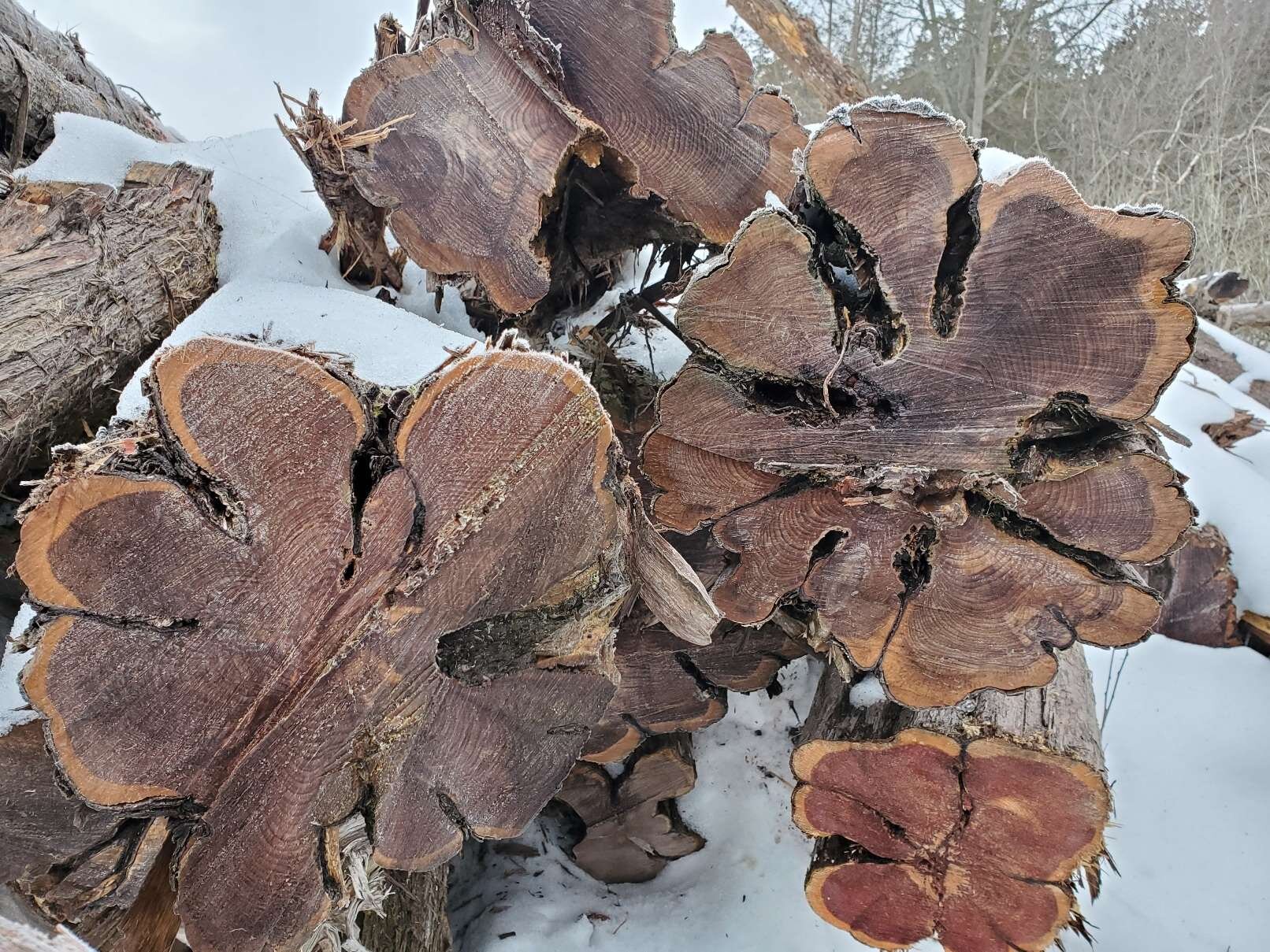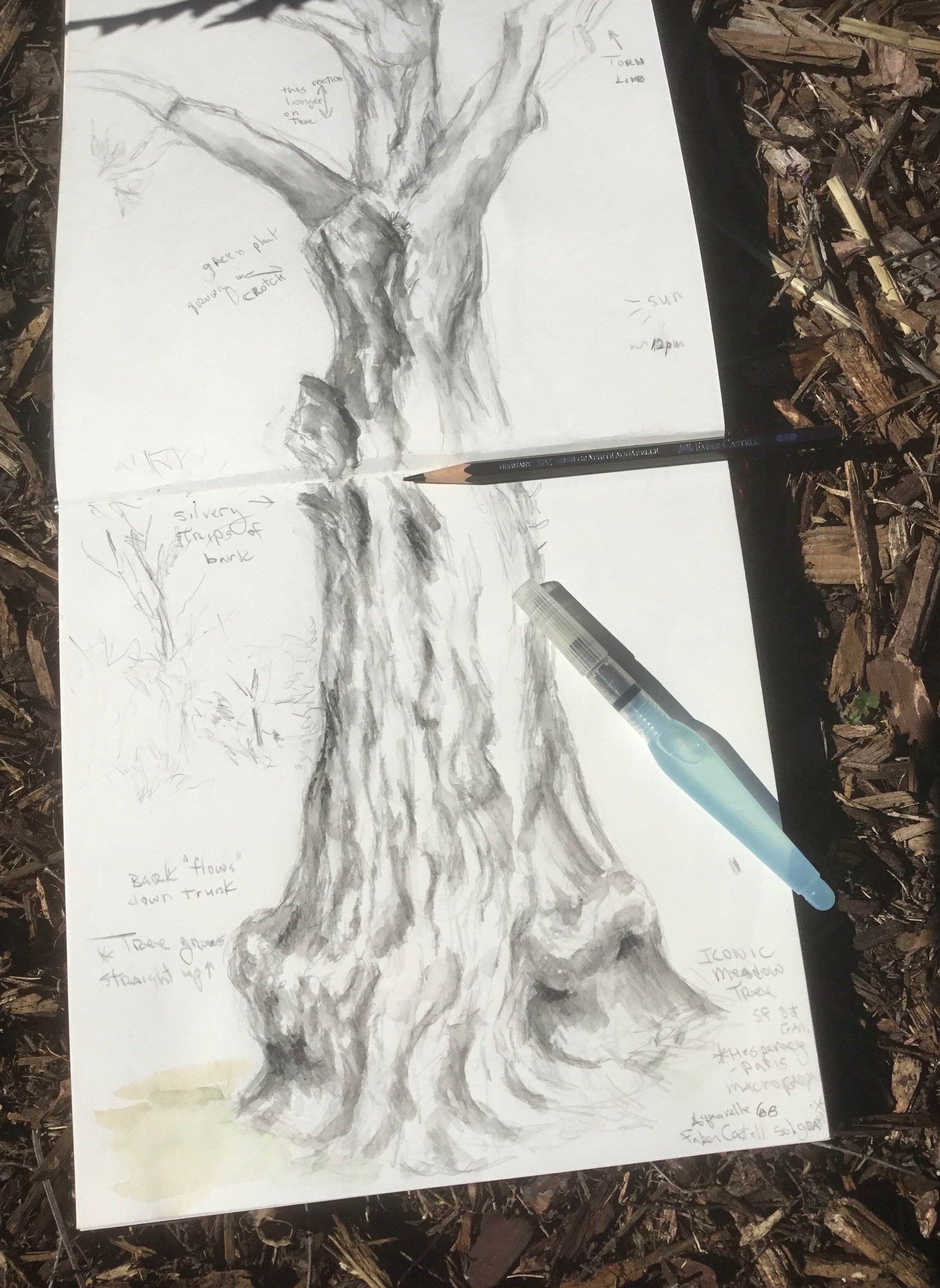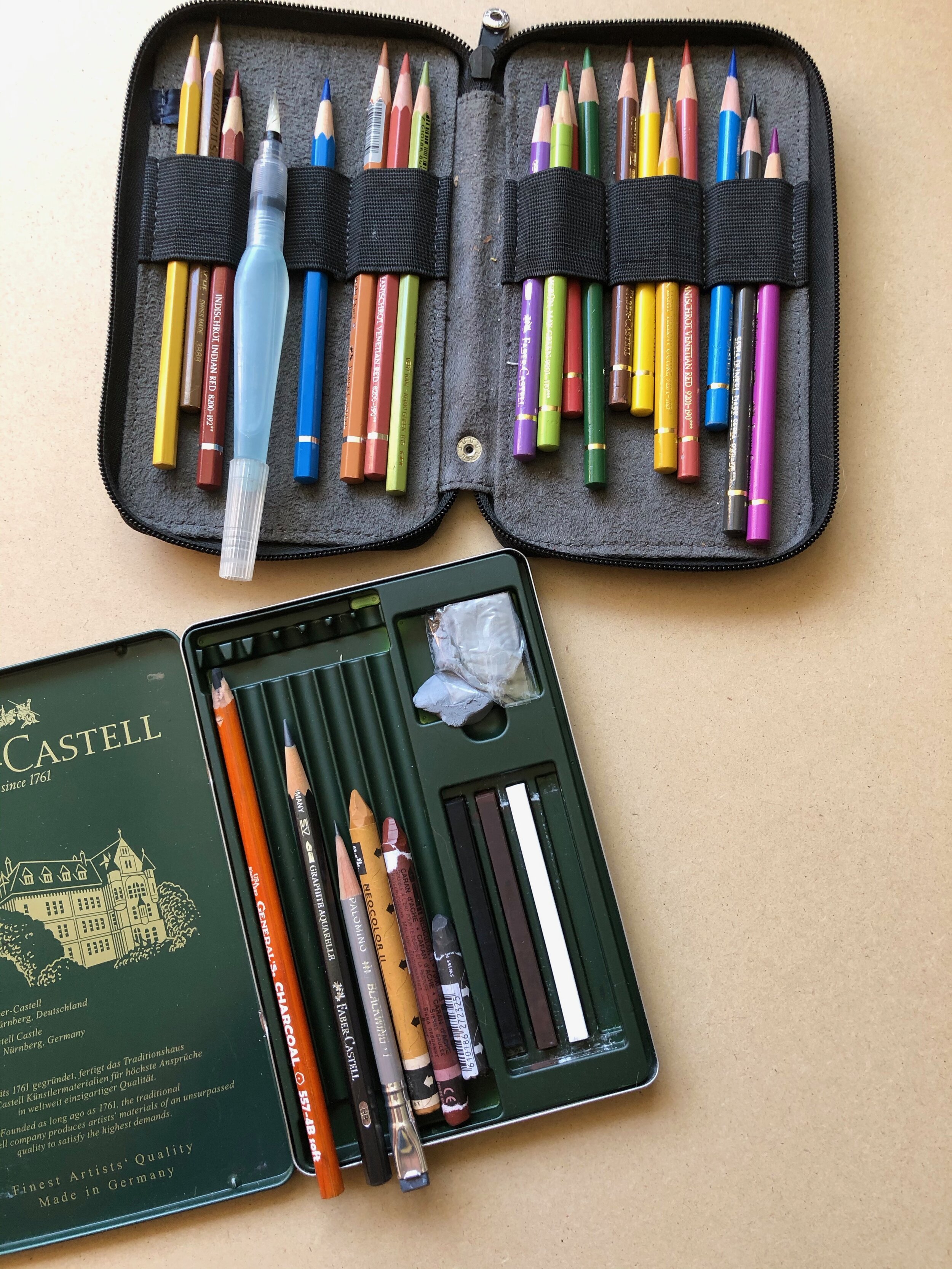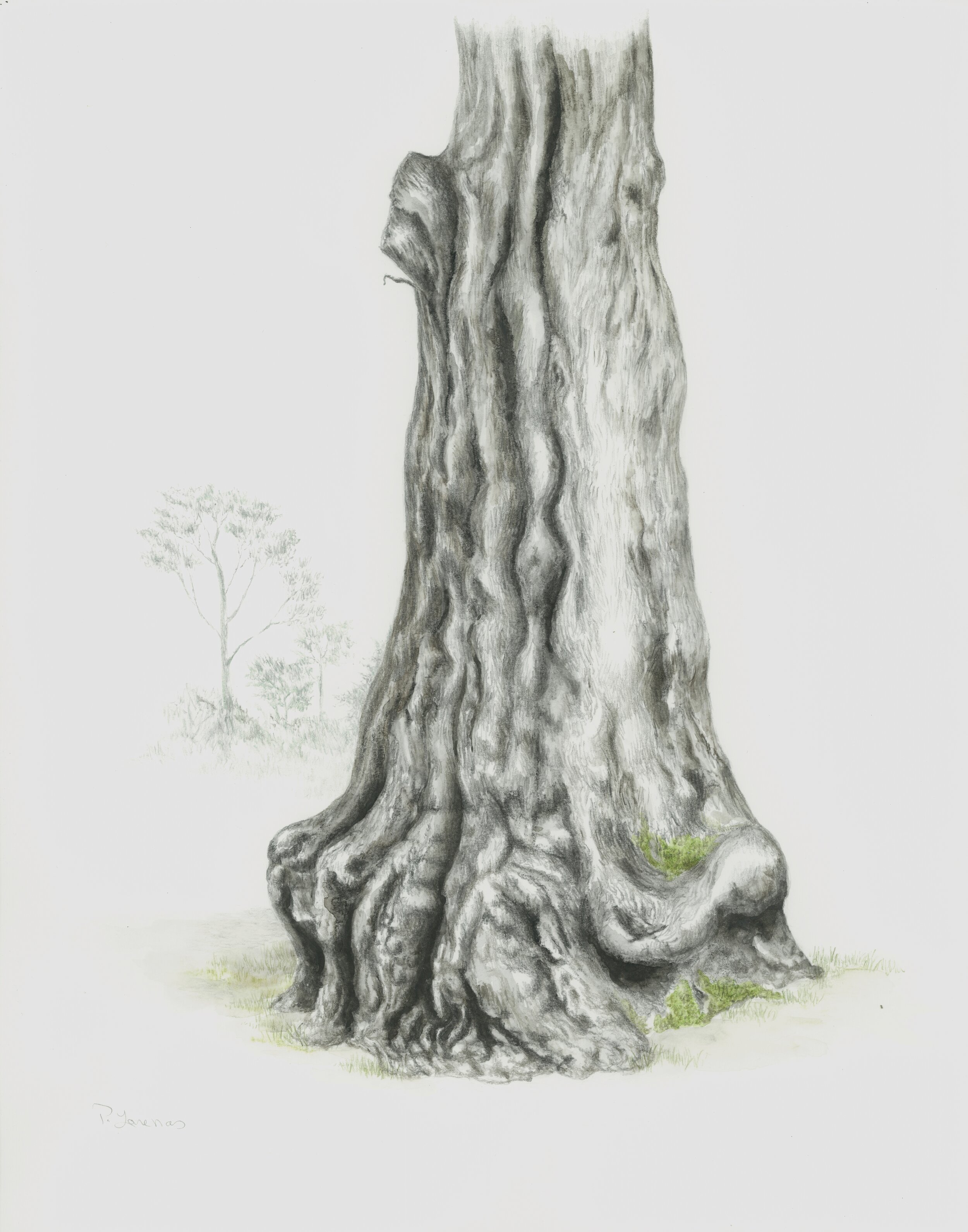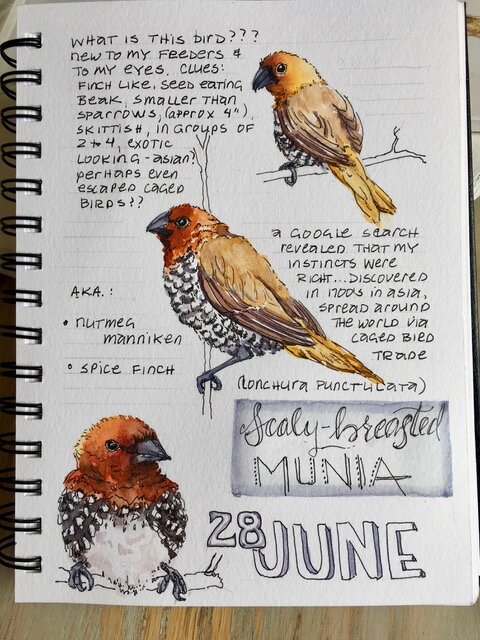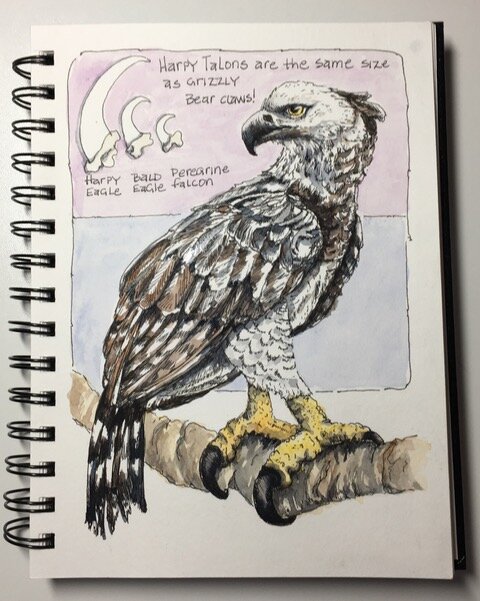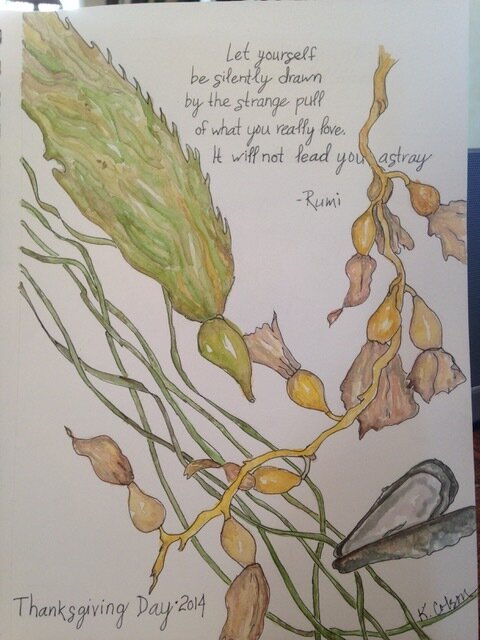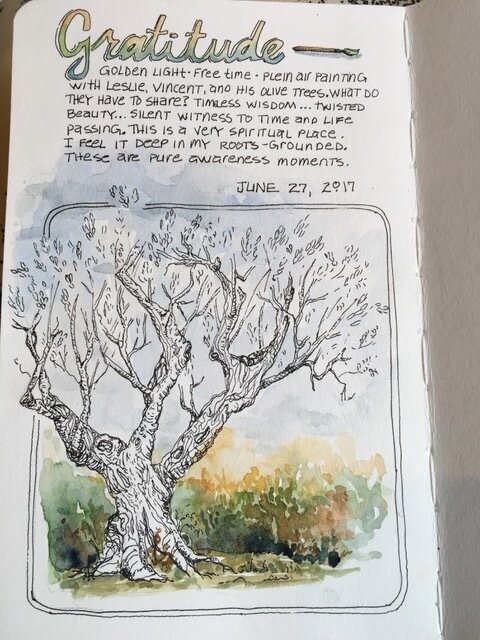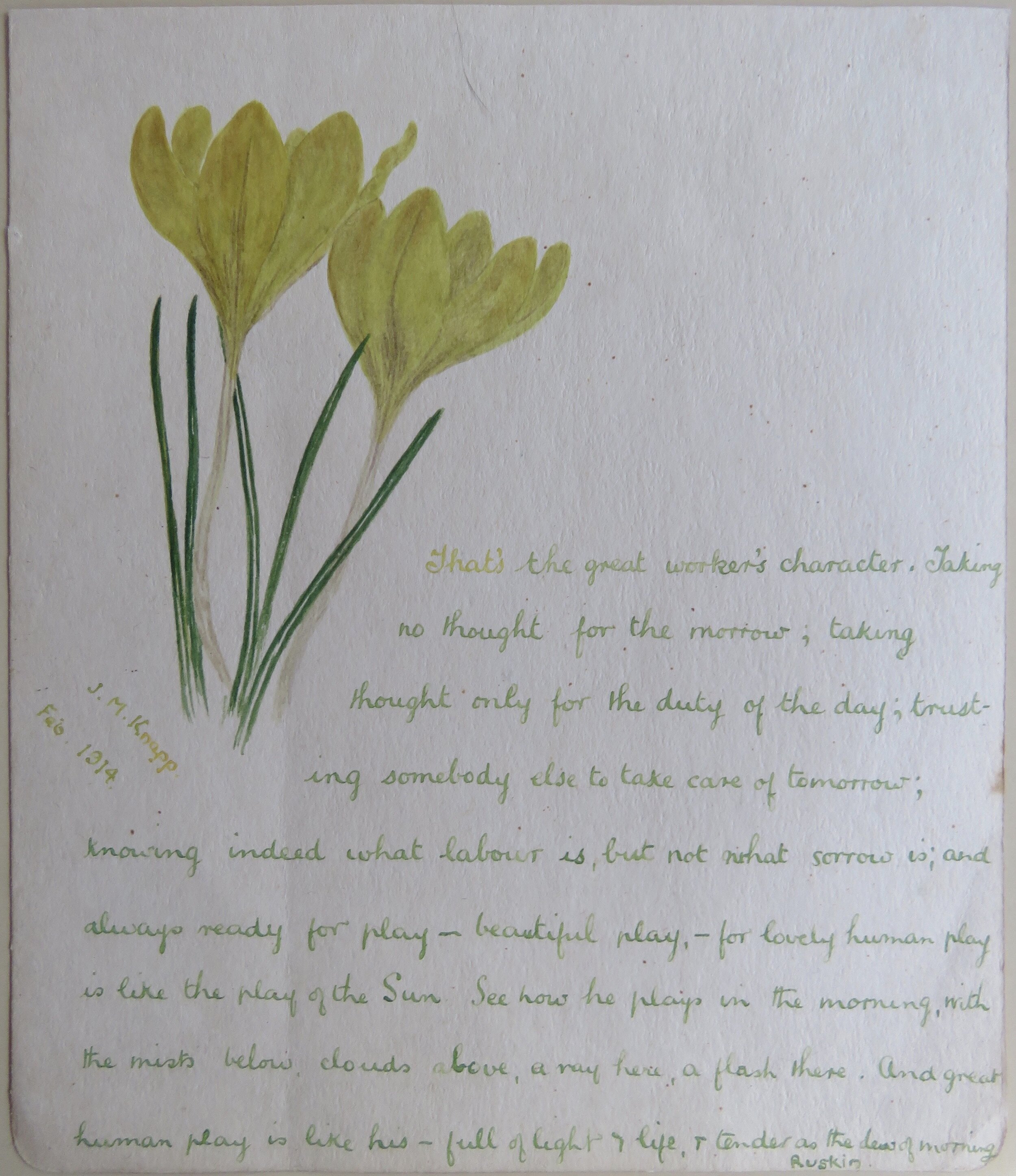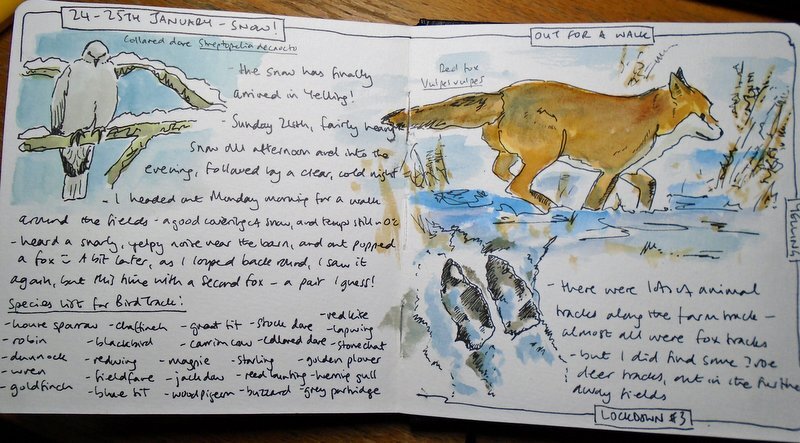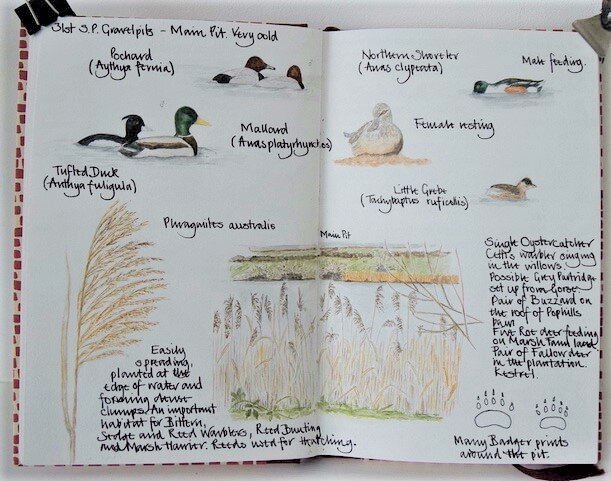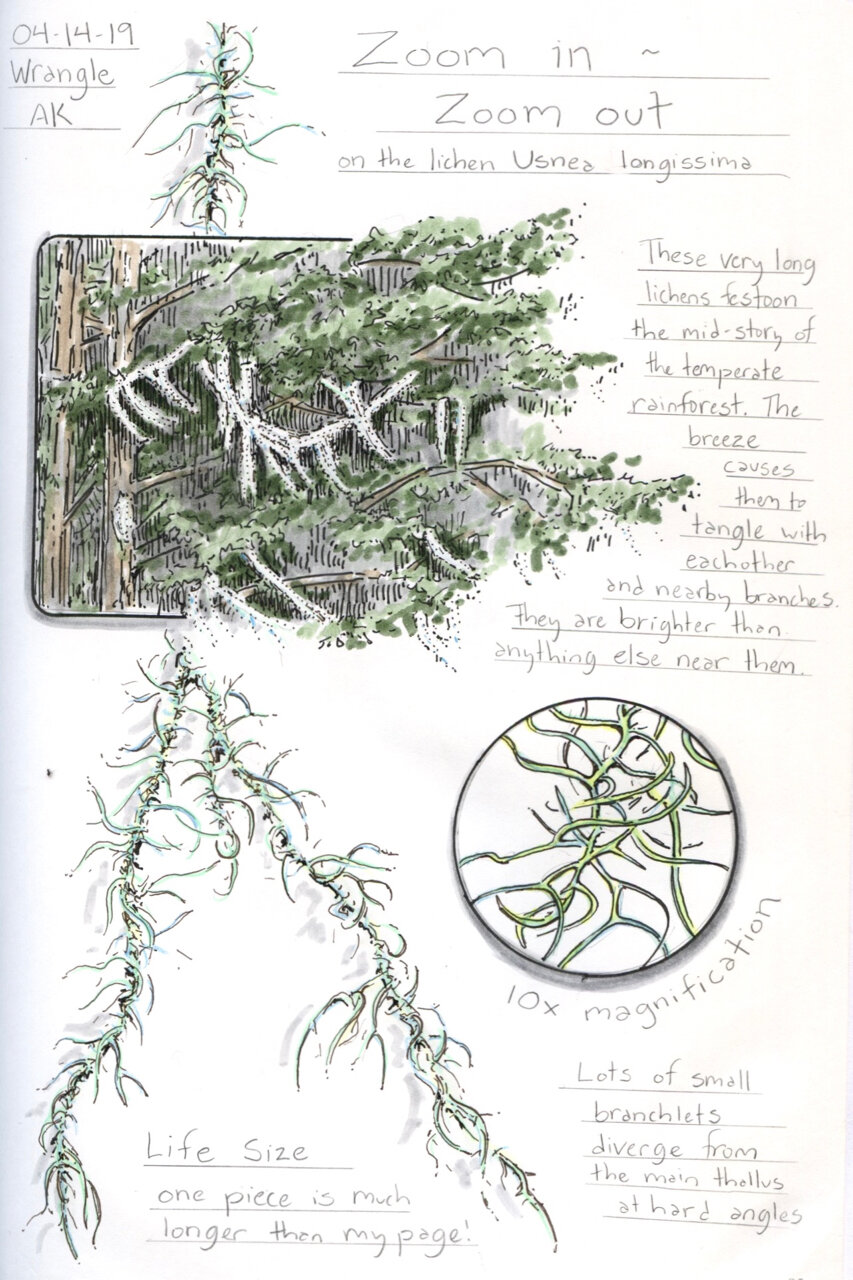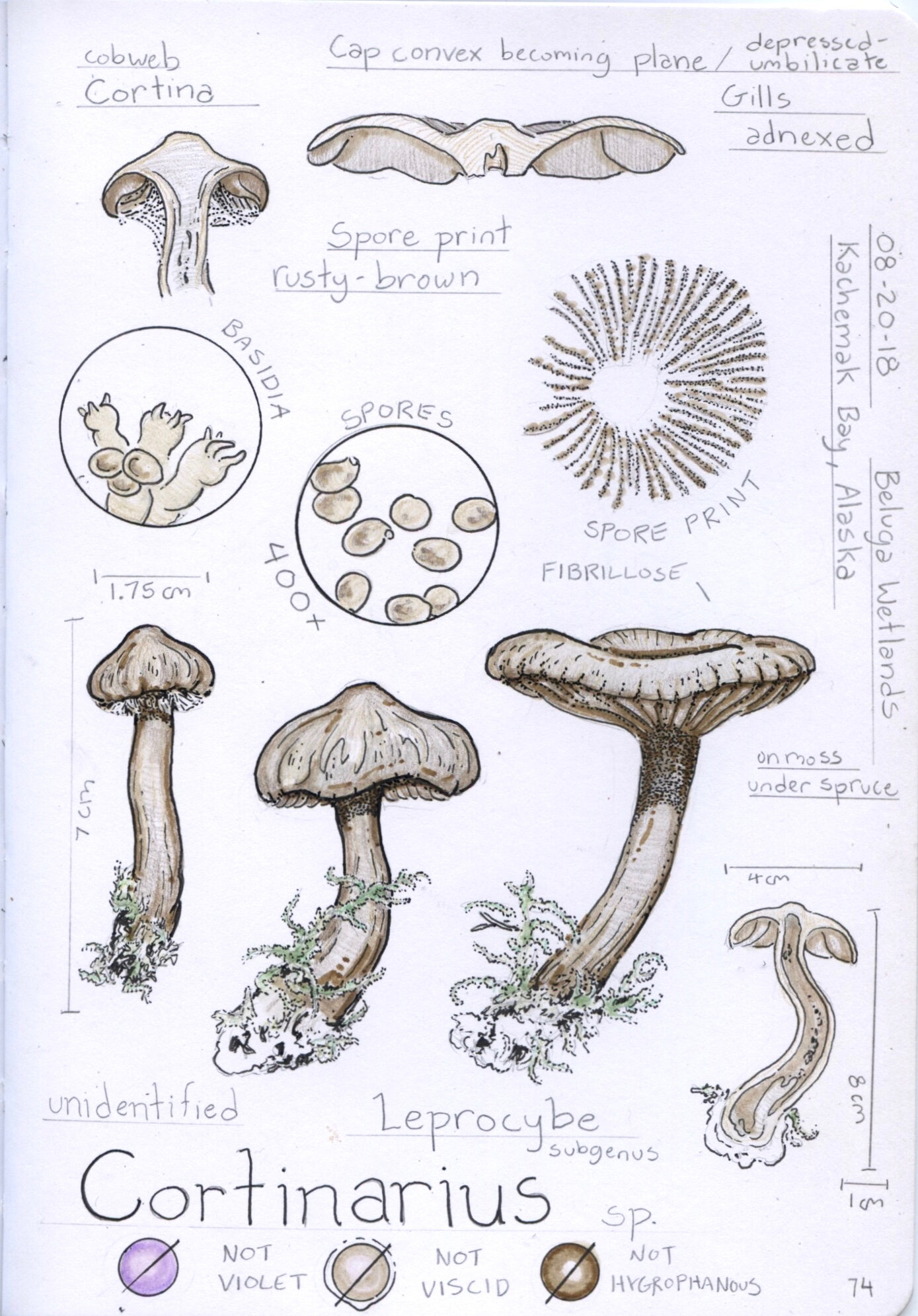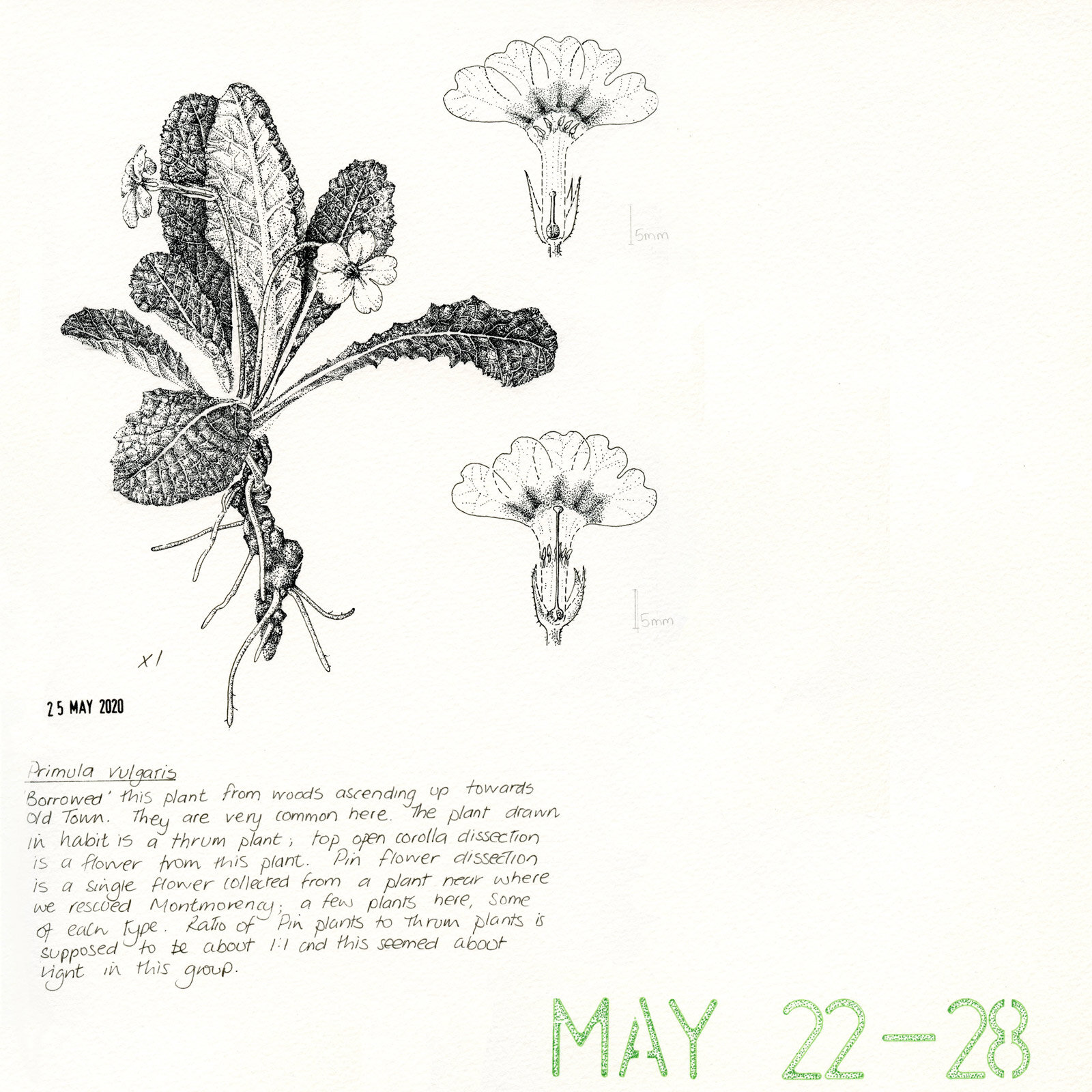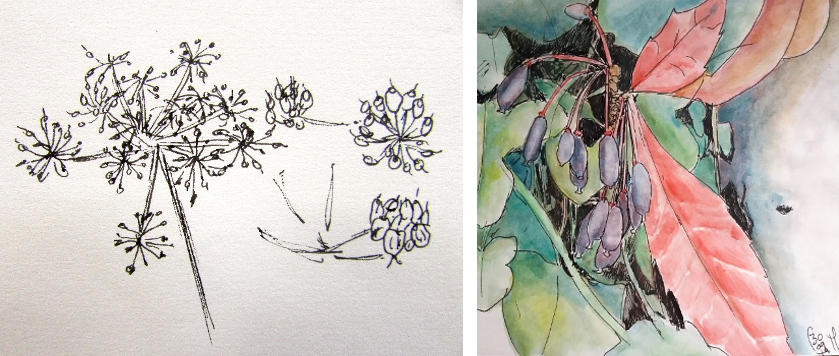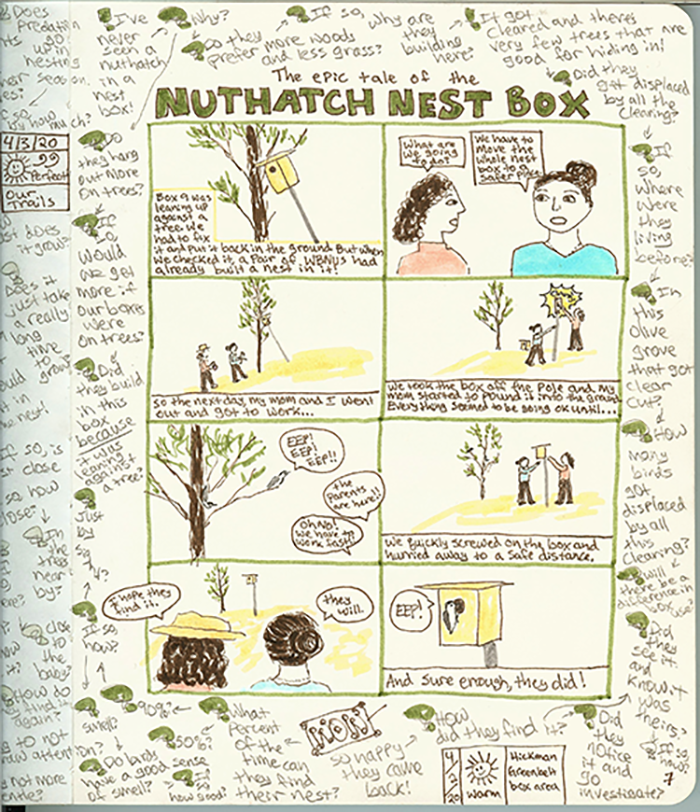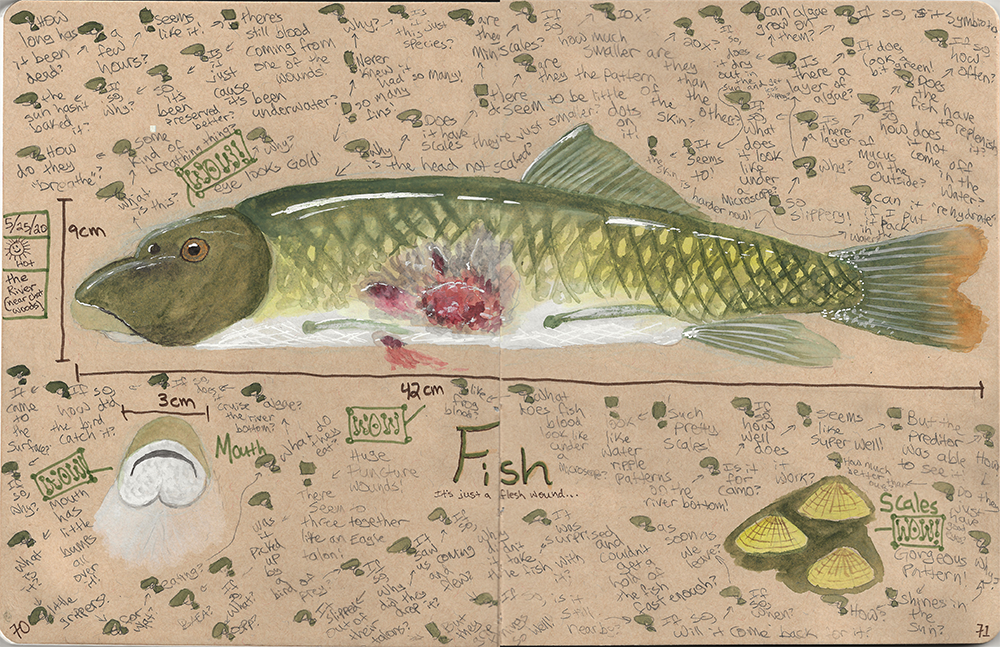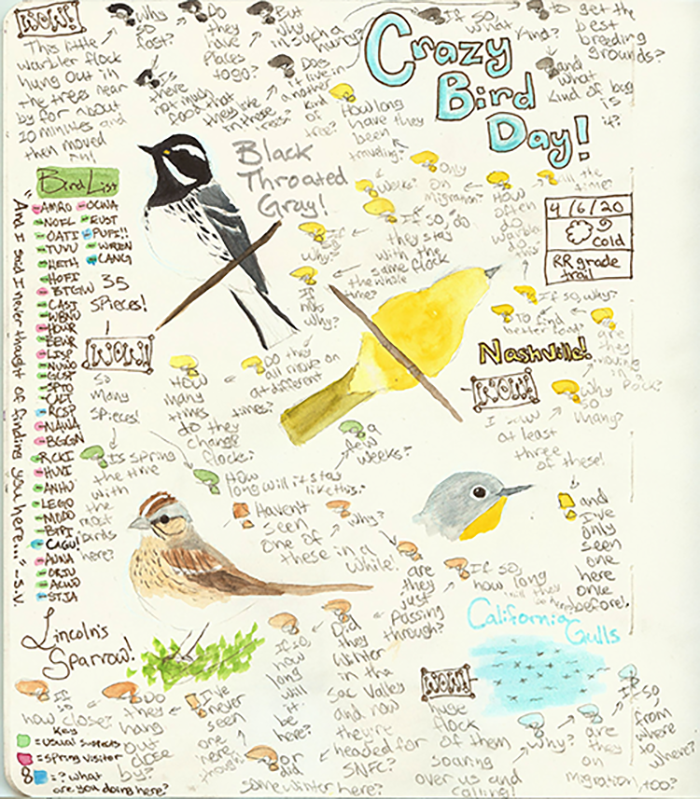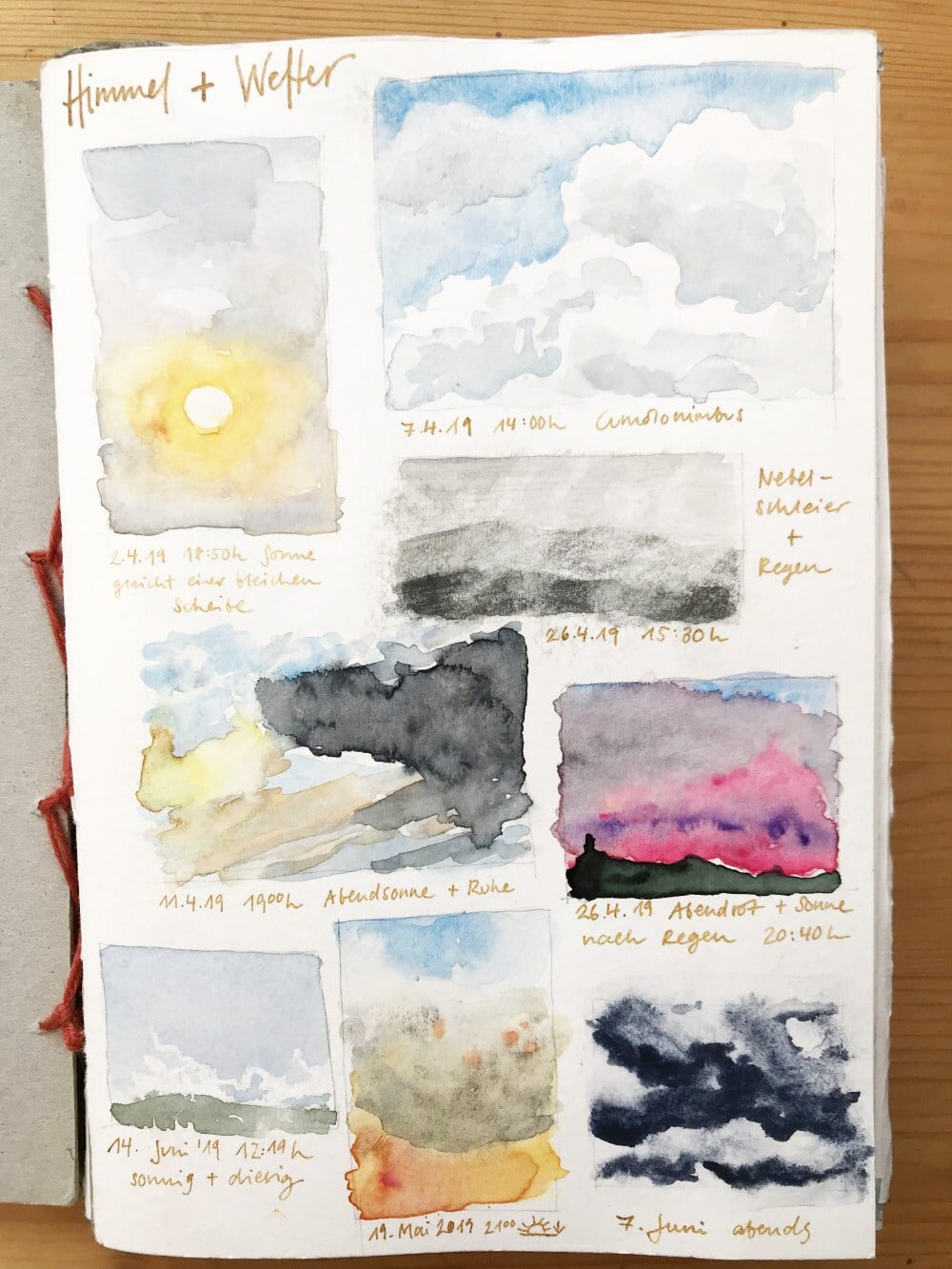‘I love nature and drawing. Nature is the most amazing thing to learn about, and we have to look after nature and not harm it. All of the plants and animals and humans are connected, and we can’t survive without each other.’
I’m writing this for my little boy, Benji, who is seven years old. Benji calls himself Benjamin Fallow (though it’s not his real name) after Fallow Deer, as deer are his favourite animals. We live in a village in Sussex, in the south of England, and have been here all of Benji’s life. I’ve only just learned to drive, and work in the village, so for Benji’s very early years we’ve walked everywhere around the village and the woodlands and fields beyond. Benji would already walk a couple of miles at 2 or 3 years old, and notices everything along the way. He draws all the time and loves to draw out in the countryside - he’s been carrying paper and pens in his backpack since he was three!
Benji collects nature treasures and has taught his dad and I, and our family and friends, so much more about nature than we ever knew before! He hasn’t had art lessons, but at his old school he used to teach groups of children how to draw animals, and has taught more art than he has been taught. He loves learning facts about nature and learning as much as he can about animals, insects and plants, and collects so many treasures that parts of our house are turning into a nature museum : ) Benji knows exactly what each of these treasures is, and the story behind each one.
Like so many children, he’s always loved drawing, painting and making things. And from a very young age he especially loved started drawing and painting from nature. When he was 2 (and a half) Benji drew this view from the top of Woolstonbury Hill, a beautiful point in the South Downs, at sunset. Benji said that he had drawn the trees small as they are far away, and next to them are their shadows! I was amazed at the colours and this idea of perspective, as no one had ever told him about that concept. I love the way that the shadows of the trees fall, all in the right direction, cast by the sunset.
Aged 3, Benji found this guinea fowl feather while playing in a local farmyard with some friends. He drew this feather the next morning, sitting at the kitchen table as I was making breakfast. I couldn’t believe it when I saw what he had made. It was the first time he copied from life so accurately, and I love the fact that he drew the fuzzy bits and imperfections.
When he was 4, Benji drew hundreds of pictures of animals, insects and dinosaurs!
He carried this drawing around for about 3 weeks, adding a butterfly each time he saw one. So these butterflies are all copied from life: Cabbage White, Peacock, Brimstone, Orange Tip, Common Blue, and others.
His love of nature and drawing has just grown over the years. Now, Benji also uses photographs, books, looks at other artist’s work and often researches several sources before drawing an animal. He studies the details of each animal and thinks carefully about each piece. This peregrine falcon that Benji drew age 6 is one of my favourites, and he used several sources as references. But Benjamin always comes back to drawing from nature, and is never happier than when out in nature with his sketchbook, preferably also covered in mud (Benji, not the sketchbook : ) )
Drawing and nature have been the constant through some quite turbulent years in many ways. We’ve been through bereavements, job loss, illnesses and changes of school.
The year before the pandemic, Benji was seriously ill, and in hospital with pneumonia leading to a collapse in both his lungs. It took a further six months to get his lungs functioning fully again, so we were already on our own lockdown for much of 2019. With his health history, the doctor advised us to shield during the first lockdown, and finding ourselves all at home together, it was nature and drawing that came to the rescue again!
Benji really had time to spend on his drawings during lockdown, and it was lovely to have time to let him just enjoy the process, and not have to rush anywhere. We went on long walks each day, and every day some treasure or sight in nature would be Benji’s ‘Nature Gift of the Day.’
‘Did you know butterflies have hearts in their wings to pump blood and control their temperature?! They have three hearts!’
‘It’s a Small Tortoiseshell! (that’s my favourite butterfly EVER!). When you see a butterfly you love you can get endorphins, and this makes you so happy that you’re full of energy!!!’
This butterfly made Benji so happy that he ran miles and miles, right up to the top of the South Downs!
‘It’s a barn owl feather! It’s my nature treasure for the day!’ It was a small flight feather, in perfect condition.
‘Can you hear it?’ Benji flapped it up and down past my ear.
‘That’s how you tell if it’s an owl’s feather, ‘cause they’re silent in flight, such an incredible find!’
‘People used to be scared of barn owls because they fly completely silently, and have such a piercing screech! But I think they bring good luck, they’re so beautiful and their hearing is incredible!’ Benji was explaining it all to me on our walk by the barn owl tree.
‘The shape of their face reflects sound to their ear openings! The barn owls left ear is higher up on its head than its right ear. The Medulla is the bit of their brain that understands hearing, it’s the biggest of any creature because they hear so well!’
Every time we pass this tree Benji searches the ground hoping for a feather! He found this barn owl feather in lockdown 1 and drew this, copying from life. The feather is about 12cm long and Benji’s drawing is life size. He used his feather to try to get the details on his barn owl painting absolutely right.
I’ve never had any kind of social media before, but I started sharing Benji’s artwork and nature discoveries during lockdown, and we were able to connect with so many passionate naturalists and artists from around the world. That’s where we met the wonderful Jules and Bethan; and the nature journaling community!
Benji has started making his notes about nature and his drawings into big nature journal pages. We collect together his drawings, and the notes he makes out in the field, which he edits, and makes a collage of these onto A3 sheets so that Benji can remember his gifts from nature this way. These are a couple of his recent pages.
Benji was so excited to be included in Bethan, Journaling from Nature’s, wonderful ‘round the world sketchbook’.
We’ve so appreciated having a garden of our own during this time, and Benji has been turning our little garden into a wildlife haven! He made his own wildlife pond out of an old washing up bowl, a bug area, a bed of pollinators, and a meadow, collecting seeds and planting them, and has been learning to take cuttings grow his own vegetables. He loves drawing flowers and is possibly even more obsessed with the details of flowers and plants than he is of animals now!
It’s been so special to have that time walking together, and to feel free to roam further and further afield. We recently made it all the way from our village to grandma’s house, nearly 20km in one day, and Benji’s longest ever walk! We’re planning to walk the South Down’s Way this summer, over 100 miles along the hills near here, which I’m sure will lead to lots more nature journaling along the way!
7-year-old Benjamin Fallow is a young artist and naturalist. He draws and paints from nature and loves studying the details and learning facts about each species.
During lockdown 2020, Benjamin won a national nature writing competition for his age group, Nature on your Doorstep with Lucy McRobert, his story was published in BBC Wildlife Magazine. His artwork has been featured on Chris Packham’s Self Isolating Bird Club, by The Wildlife Trusts, the Natural History Museum, RSPB, Greenpeace UK, and received amazing encouragement from Sir David Attenborough!
If he’s not drawing, Benji’s usually out with his binoculars, or covered in mud : ) Most of all, he is passionate about protecting nature and wildlife, and wants to use his artwork to encourage people to look after nature.
You can find Benji’s work online @benjaminfallow



